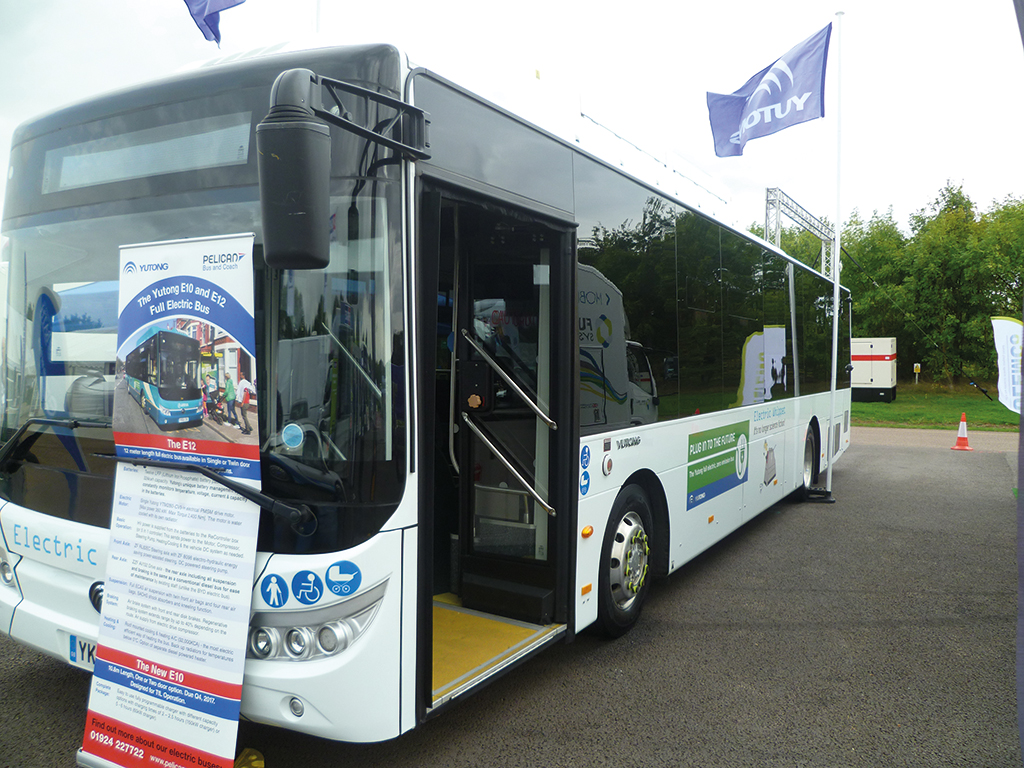Quick win technology to tackle air pollution

Older bus fleets are a significant source of pollution and need a rapid and cost-effective solution. The LowCVP has analysed a range of retrofit technologies and devised a Clean Vehicle Retrofit Accreditation Scheme to help transport operators identify the most effective solutions for lowering emission
For a number of local authorities, the UK plan for tackling roadside NO2 concentrations presents a significant challenge, requiring them to improve poor air quality as quickly as possible.
Whilst the latest ultra-clean Euro VI buses and advanced electrified options comfortably meet clean emission requirements, a significant majority of the older, existing bus fleet are seen as being a significant source of pollution and need a rapid and cost-effective solution.
There are a range of retrofit technologies out there that claim they can reduce emissions and pollutants. But until now, there was no independent evidence to show that such technologies actually deliver the expected emissions reductions and air quality benefits in real world operation.
Real-world analysis
To assess the different types of retrofit solutions, the LowCVP conducted analysis of the Clean Vehicle Technology Fund (CVTF) and Clean Bus Technology Fund (CBTF) programmes over the last five years. The LowCVP’s evaluation report showed which technologies are the most effective, and have resulted in the development of a Clean Vehicle Retrofit Accreditation Scheme (CVRAS). The scheme, developed with the Energy Saving Trust, provides a single standard for any emission technology to be validated to meet the standards set out in the government’s Clean Air Zone
Framework for England. It allows for a robust way of assessing competing retrofit technologies and helping authorities and operators to identify effective technologies.
It is initially for buses, but will extend rapidly to include a wide range of vehicles. A new £30 million government grant scheme is now open to local authorities in England and Wales who are looking to implement such accredited retrofit technologies in their bus fleets.
In-depth analysis
The LowCVP’s Evaluation Report shows how it is critical for any vehicle operators and authorities to get independent and reliable emissions data or certification, before committing to any retrofit programme, and to ensure the technology is both effective and reliable in-service.
The Clean Bus Technology Fund (2013/2015) and Clean Vehicle Technology Fund (2014) programmes were introduced by the Department of Transport (DfT) to help reduce NOx emissions from diesel vehicles in cities experiencing poor air quality. The funding facilitated trials which involved retrofitting 2,137 diesel vehicles using a variety of NOx emission abatement technologies.
The government’s Joint Air Quality Unit (JAQU) commissioned and funded the LowCVP to undertake an evaluation of the CVTF and CBTF programmes, with the objective of determining the efficacy of different retrofit technologies in terms of reducing tailpipe NOx emissions and evaluating in-service performance.
In addition, the study assessed the impacts of the technologies on other air pollutants and greenhouse gas emissions. It covered twenty‑five local authority projects, five vehicle types and seven technologies including exhaust after-treatment such as selective catalytic reduction (SCR), fuel saving systems such as flywheel hybrids and engine conversions (such as the introduction of electric powertrains).
The results
The LowCVP analysed a range of vehicle testing data, before and after retrofit equipment was fitted and when in service.
The Evaluation Report revealed that the highest NOx emission reductions (80 per cent to 100 per cent) were seen for retrofit SCR after-treatment and diesel bus engine conversion to use an electric powertrain.
There were moderate NOx emission reductions (25 per cent to 29 per cent) from retrofit thermal management and flywheel hybrid technologies. There were low NOx emission reductions (three per cent to six per cent) achieved by mild hybrid, hybrid assist, and dual fuel CNG conversions.
SCR retrofit, as well as showing the highest emissions reduction also demonstrated excellent conformity with testing undertaken six months and two years after the initial fitting. The technology achieved high levels of NO2 emissions reduction (>80 per cent). The majority of retrofit SCR systems were fitted with particle filters, also resulting in high reductions (>75 per cent) in particulate (PM) emissions.
The rogues from the rubbish
LowCVP’s head of projects, Gloria Esposito, said: “The LowCVP work has highlighted the need for robust and independent vehicle emission testing to demonstrate the performance of retrofit technologies in terms of both air pollutants and greenhouse gas emissions.
“The Clean Vehicle Retrofit Accreditation Scheme builds upon our earlier work, enabling technology providers and vehicle users to focus on a nationally‑recognised independent system of equipment quality, durability and performance.
“LowCVP’s work in developing retrofit technology accreditation over a number of years provides one important part of the solution to tackling the urgent problem of cutting air pollution in our cities.”
LowCVP’s managing director, Andy Eastlake, added: “With the current focus on city air quality, there are a lot of erroneous claims being made for emissions-saving technology. The accreditation scheme and our technology evaluation will help all stakeholders sort robust retrofits from rogues and rubbish.”






